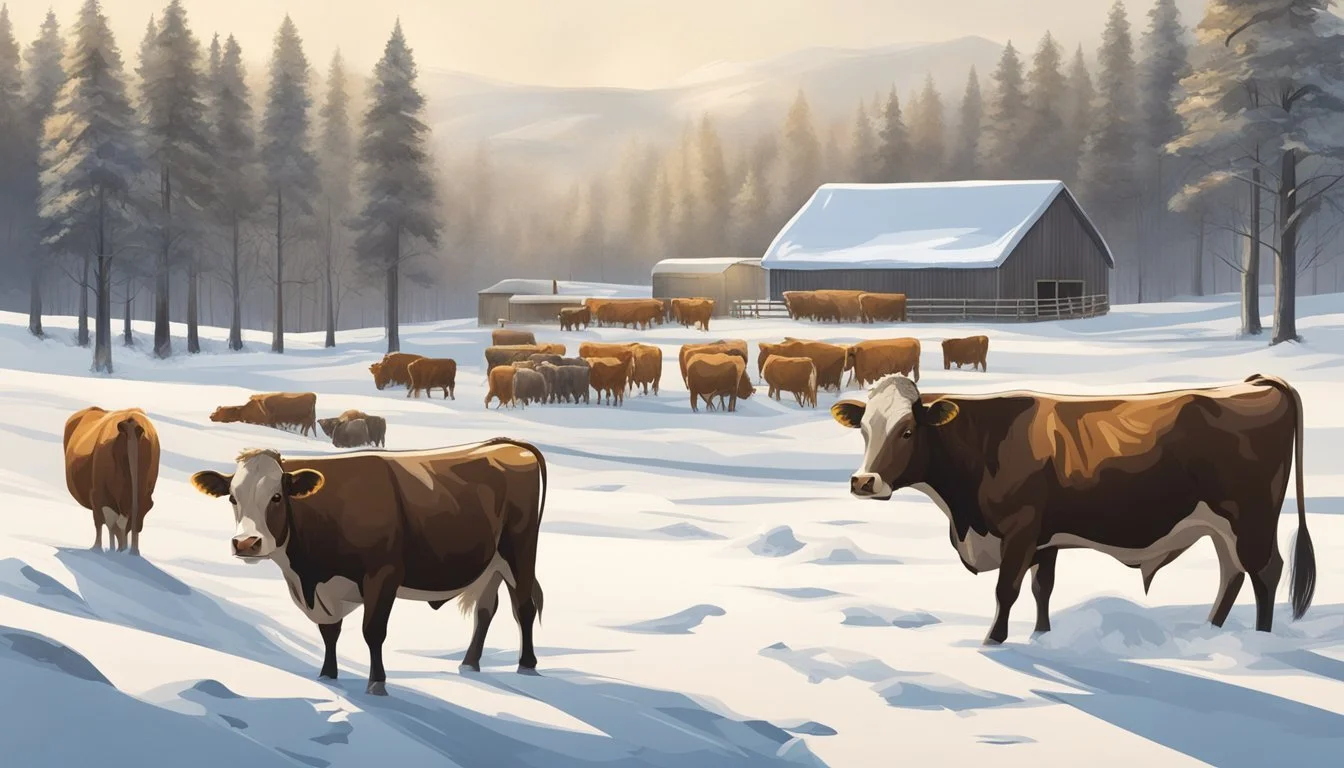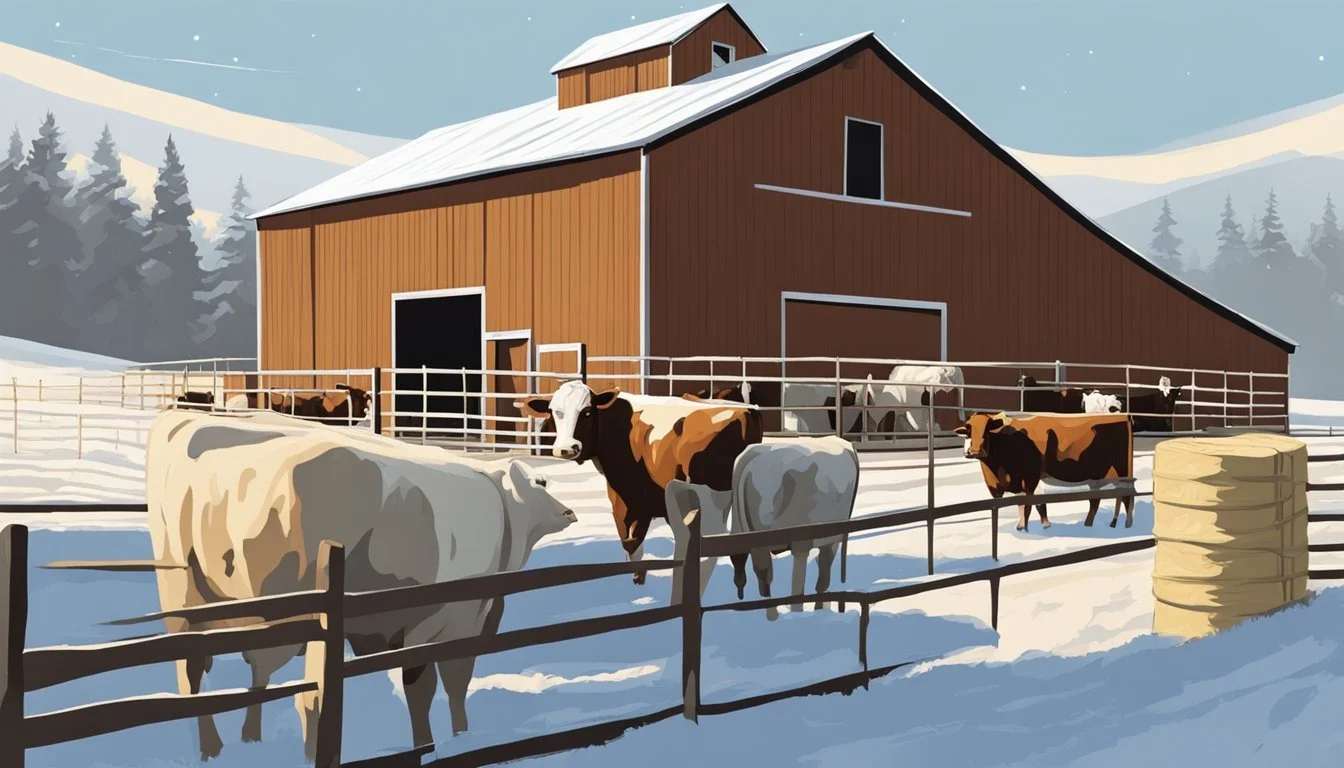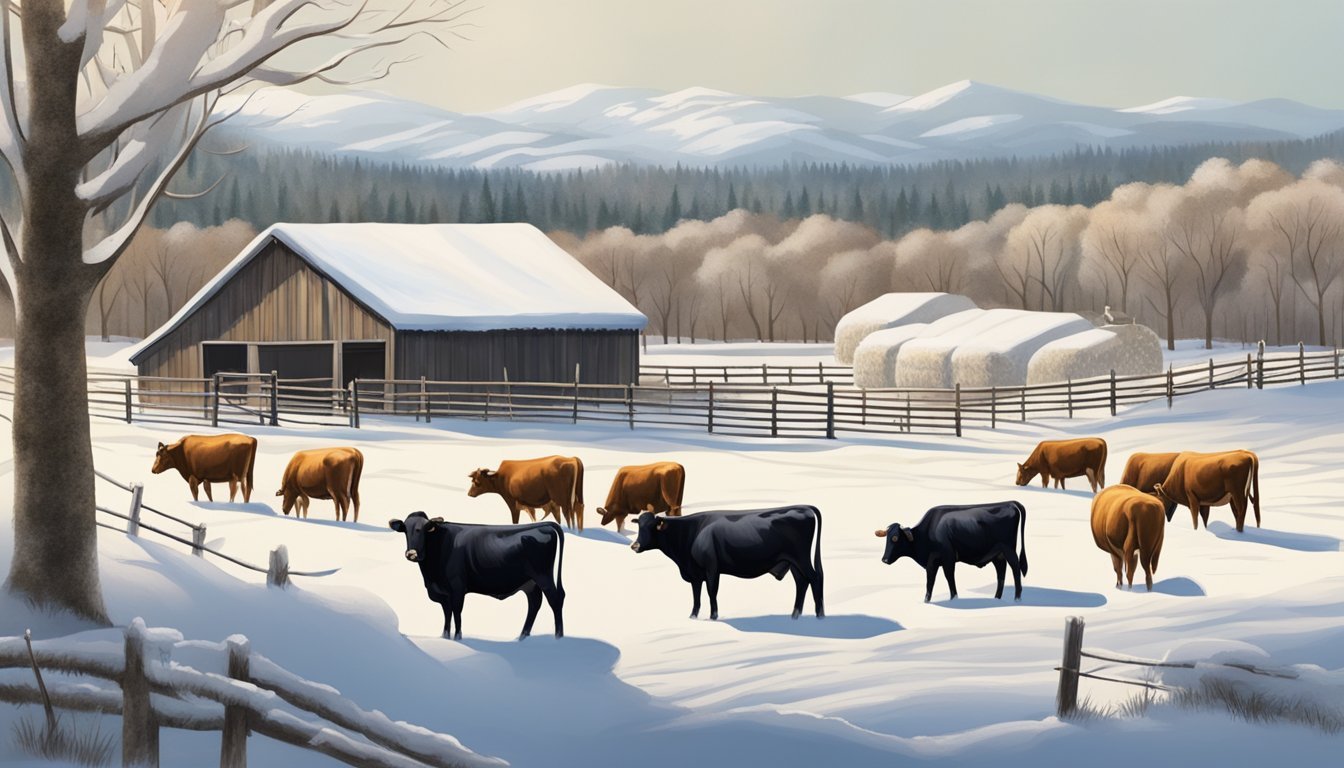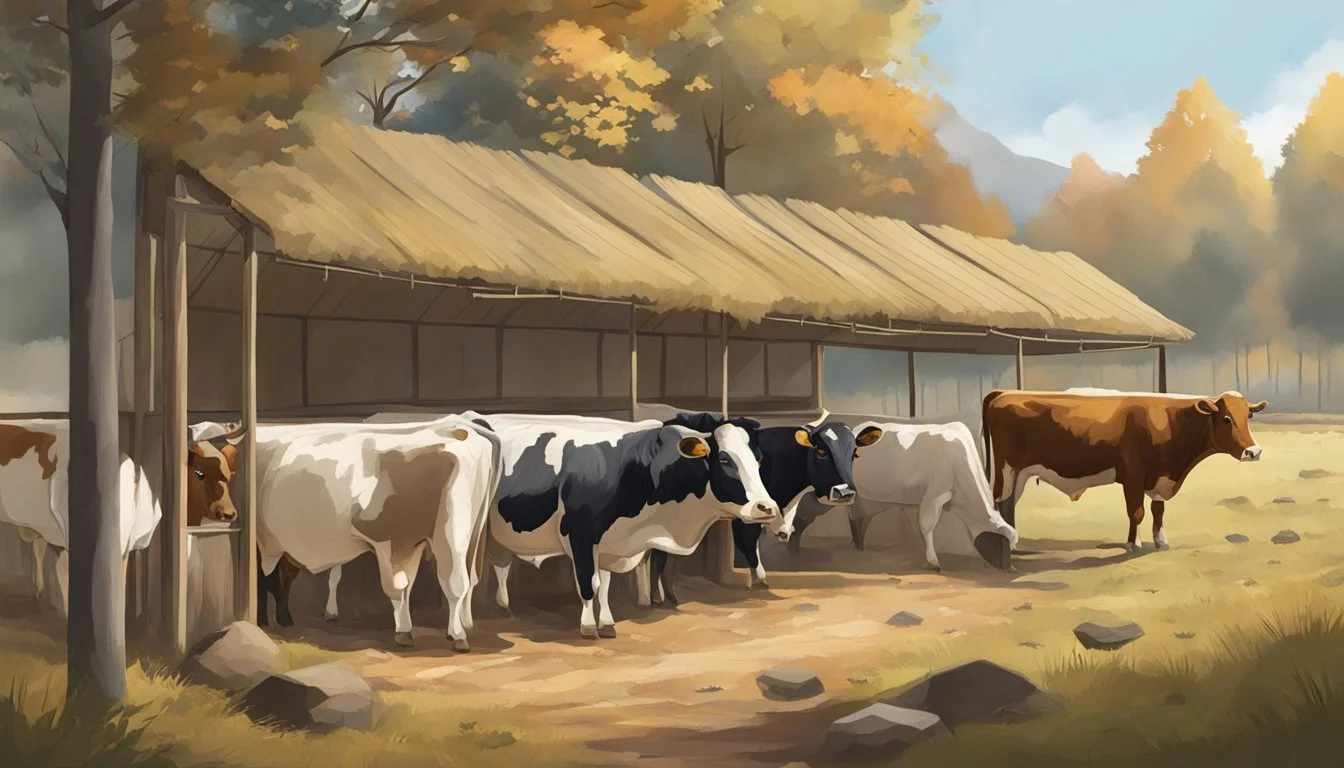How do I prepare my cattle for winter?
Essential Tips for Cold Weather Care
Preparing cattle for the harshness of winter requires foresight and meticulous planning to ensure their well-being. As temperatures drop, cattle have increased energy requirements, and their management needs to be adjusted accordingly. Stable body condition is critical through the winter months, allowing cattle to maintain health and warmth. Farmers should assess their cattle's nutritional needs, as more calories are required for them to preserve their body temperature in extreme cold. It's vital to provide an adequate supply of quality feed, which may include higher quantities of grain to help generate body heat.
Water is another crucial element often overlooked during winter. Ensuring livestock have access to a reliable source of water is fundamental, as water sources can easily freeze, hindering the cattle's ability to stay hydrated. Shelter also plays an essential role in winter cattle care. Proper housing or windbreaks protect animals from the severe weather, reducing stress and helping them conserve energy. It's important for the shelters to be well-ventilated to prevent moisture build-up, which can lead to respiratory issues.
In addition to nutritional and shelter needs, there is also a need to understand the signs of cold stress in cattle. They may display behaviors such as huddling together, keeping their heads down, or turning their backs to the wind. Recognizing these signs early ensures prompt action can be taken to alleviate their discomfort. By providing the appropriate resources and care, farmers can successfully prepare their cattle for winter, mitigating the impact of cold stress and maintaining the herd's health.
Assessing Cattle Body Condition
Proper assessment of cattle body condition before winter is crucial for ensuring the health and productivity of the herd. It entails a systematic examination of the animals' physical shape to determine their readiness for colder months.
Understanding Body Condition Scores (BCS)
Body Condition Scores (BCS) are a standardized system used to classify the health status of cattle based on their fat and muscle reserves. This method is vital for making informed decisions on cattle nutrition and overall management. The scoring scale typically ranges from 1 to 9, with 1 indicating an animal that is extremely thin and 9 representing one that is excessively fat. A cow with a BCS of 5 is generally considered to be at an optimal weight, indicating that they have a good balance of fat reserves for insulation and energy without being overweight, which can lead to calving and mobility issues. For detailed information on BCS, the PDF Guide to Body Condition Scoring Beef Cows and Bulls offers a comprehensive overview.
Monitoring Weight and Nutrition
Regular monitoring of a cow's weight and nutrition ahead of winter is critical. Weight can be a practical indication of the cow's current nutrition state. Farmers should ensure that cows do not enter winter in a thin condition, as they have less energy reserves to withstand cold stress. Conversely, cattle that are too fat may face calving difficulties and metabolic problems. Developing a plan based on the assessment of body condition can include adjusting feed rations or the feeding strategy to meet the cows' energy demands without causing excessive weight gain. Understanding and meeting these nutritional needs is essential for the health of the herd as they face the challenges of winter.
Shelter and Comfort Measures
In preparing cattle for winter, it is crucial to ensure they have access to appropriate shelter and bedding to maintain their health and comfort. These measures safeguard them from the cold and wind, which are significant factors in their overall well-being during the harsh winter months.
Providing Windbreaks and Insulation
Windbreaks play a vital role in protecting cattle from chilling winds. Constructed from a variety of materials, windbreaks reduce the wind chill factor and can considerably lower the amount of energy cattle expend to stay warm. Solid windbreaks, such as walls or natural windbreaks of dense forestry, are effective at blocking wind. Furthermore, the integration of insulation within shelters can help retain heat, ensuring a more stable temperature. Insulated barns or covers, along with energy-efficient designs, contribute significantly to the cattle's warmth by minimizing heat loss.
Bedding Materials and Maintenance
Choosing the right bedding materials is critical for cattle comfort. Options such as straw or sand have different benefits, where straw provides excellent insulation and sand can offer a dry, firm bedding. The use of straw is often preferred in cold weather due to its insulative properties and ease of composting. Ensuring regular maintenance and replacement of bedding is essential to keep it clean and dry, thereby reducing the risk of disease and discomfort. A bedding layer thick enough to provide a barrier between the cattle and the cold ground will facilitate a more comfortable environment for rest and rumination.
Nutrition and Feeding Strategies
Preparing cattle for winter requires careful consideration of their dietary needs to ensure they maintain health and productivity in colder weather. Nutrition strategies must account for increased energy demands and the need for accessible, high-quality forage.
Adjusting Feed for Cold Weather
As temperatures drop, cattle experience an increase in energy requirements to maintain their core body temperature. It’s essential to increase the calorie content of their feed to meet this demand. For instance, providing additional grain can supply the necessary energy boost. The nutrient density of the feed plays a crucial role, and energy-rich feeds such as cake or high-quality hay can help cattle maintain condition during the cold months.
Ensuring Access to Forage and Supplements
Cattle should have consistent access to forage, which forms the basis of their winter diet. Stored hay needs to be tested to assess its nutritional quality, as the protein and nutrient content can vary. If the forage quality is low, supplemental protein sources might be necessary to ensure that cattle receive their essential nutrients. For cattle on pasture, it is also important to manage grazing to prevent overgrazing and ensure longevity of the forage supply.
Special Considerations for Pregnant Cows
Pregnant cows have unique nutritional needs that must be addressed during the winter months. They require increased protein and nutrients to support fetal growth, especially in the last trimester. Adjusting their diet with high-quality forage or supplemental protein, such as cake or a balanced grain mix, can be crucial for the health of both the cow and her developing calf. Additionally, ensuring an adequate supply of clean, unfrozen water is critical for pregnant cows to maintain hydration and support the pregnancy.
Water Supply and Quality
Maintaining a functional water supply and ensuring water quality are critical as cattle require consistent access to water, which can be challenging in winter conditions. Proper preparation can prevent dehydration and stress in cattle, promoting overall health and productivity.
Preventing Water Sources from Freezing
To keep water sources from freezing during winter, cattle producers can employ several strategies. Heated waterers are one effective method, as they maintain a water temperature conducive to optimal water consumption. Overflows should be managed with adequate drainage systems in place. Another tactic includes maintaining a continuous flow of water, which can help prevent ice build-up in automatic cattle waterers, although this requires monitoring to avoid excess water and potential overflow issues.
Maintaining Clean and Accessible Water
The accessibility of water troughs or buckets should be a priority, especially in snowy conditions. They should be situated near grazing areas to minimize travel distance for cattle. Regular cleaning is essential to prevent the buildup of ice and ensure the water remains clean, as dirty or frozen water can deter cattle from drinking. Furthermore, during extreme cold, the placement of water containers should be such that it allows cattle to stand sheltered while drinking, conserving their body heat.
Health and Welfare Management
Preparing cattle for winter involves key health and welfare strategies to prevent illness and maintain productivity. These include controlling parasites and diseases, and ensuring proper vaccinations and veterinary care are in place.
Controlling Parasites and Diseases
Parasite loads can affect the feed efficiency and overall health of livestock, especially during stressful winter months. It is essential that cattle are dewormed prior to winter to minimize the challenges they face in colder weather. Controlling external parasites like lice is equally important, as infestations can lead to skin irritations and increased stress on the animals. The beef producer can benefit from a sound deworming program to enhance theimmune system of the cattle. Regular health checks help identify the symptoms of common winter diseases for timely intervention and treatment.
Vaccinations and Veterinary Care
A strong vaccination program is crucial for maintaining a healthy cattle herd. Vaccinations help boost the cattle's immune system ahead of the winter, when animals are more susceptible to respiratory diseases. Consult with a veterinarian to establish a vaccination schedule tailored to the specific needs and risks of the herd. Proper veterinary care extends beyond vaccinations; it includes reproductive health ensuring good conception rates throughout the breeding season and continues with regular health assessments throughout the winter to quickly address any emergent health issues. Regular veterinary check-ups ensure that any diseases are treated promptly, keeping the herd in stable health through the colder months.
Environmental Considerations
Preparing cattle for winter involves understanding the environmental impacts of cold stress in cattle, including the challenges presented by winter weather such as wind, snow, ice, and mud. Adequate protection against these elements is essential to maintain animal welfare and operational productivity.
Managing Cattle in Snow and Ice Conditions
In areas where snow and ice are prevalent, they must ensure that cattle have access to clean, unfrozen water and that feeding areas are clear of ice to prevent injuries. Providing windbreaks can help shield cattle from icy blasts, and regular removal of snow from paths is crucial to prevent the creation of slippery surfaces that could cause falls and injuries.
Protecting Livestock from Extreme Cold
The risk of cold stress in cattle escalates during extreme cold temperatures. It's imperative to offer adequate bedding materials, like straw or wood shavings, to insulate against the cold ground. Structures should be constructed to provide shelter from prevailing winds and sleet. Moreover, adjusting the cattle's diet can help them generate more body heat internally, which is vital for maintaining their core body temperature during periods of intense cold.
Planning for Spring
As the winter months wane, cattle farmers must shift their focus towards the demands of the spring season. Key priorities include preparing for the calving season, and transitioning herds to warmer weather, which necessitates changes in both shelter and feed strategies.
Preparing for Calving Season
Farmers must be meticulous when preparing for calving season. It's crucial to ensure that all calving supplies and equipment are readily available and in good working order. These supplies often include:
Obstetrical gloves
Calving chains
Colostrum or colostrum replacer
Warming units for hypothermic calves
Calving areas should be clean, dry, well-bedded, and protected from the elements. Nutritional needs of cows should be met with high-quality feed to support lactation and post-calving recovery. Keeping thorough records of breeding dates can help predict calving windows, allowing for closer observation and assistance, if necessary.
Transitioning to Warmer Weather
As temperatures rise, so does the need for a shift in managing pastures and hay fields. Implementing a rotational grazing system can help maintain pasture health and provide optimal forage for cattle. Farmers should assess and manage the stocking rates to prevent overgrazing during the lush spring growth. Additionally, ensuring easy access to clean water is essential for cattle well-being.
With regards to feed, transitioning from winter rations to spring grazing must be done gradually to prevent digestive issues. If spring forage is delayed or inadequate, continued supplementation with hay or grain may be necessary. Cattle should also be monitored for health issues more prevalent in warmer months, such as parasites, and appropriate treatments should be applied.
Economic Considerations
Economic considerations are crucial when preparing cattle for winter, as efficient feed allocation and reproductive efficiency directly impact a farm's profitability. One must meticulously assess feed costs while ensuring that cattle health and reproductive capacity are not compromised due to inadequate nutrition.
Assessing Feed Costs and Efficiency
Effectively managing feed costs is one of the most crucial factors for cattle producers. Seasonal changes require different nutritional strategies, especially for maintaining body heat and overall health during colder months. Producers should examine the energy values of available forages to make cost-effective decisions that ensure cattle receive adequate nutrition. An example is highlighted in the Ag Proud article on cost-effective winter preparation, emphasizing the significance of stocking rates and a controlled calving season for better nutrient management during winter.
Prioritize High-Quality Forages: High-energy forages can reduce the amount of supplemental feed required.
Regular Forage Testing: Determine the energy values to improve feeding efficiency.
Monitor Feed Intake: Keep track of consumption to prevent waste and ensure optimal nutrient uptake.
Understanding Long-term Impacts on Reproduction
The reproductive efficiency of cattle can be significantly stressed by winter conditions, impacting long-term economic returns. Low temperatures increase energy demands for body heat, potentially leading to inadequate nutrition if not properly managed, affecting reproductive cycles. The UMN Extension article supports that maintaining a stable body condition is essential for cattle to ride out severe winter weather and its impacts on reproduction. Strategically planning winter feeding protocols based on a proof pays trial can optimize the condition of cows for successful breeding post-winter.
Balance Energy Requirements: Ensure cattle diets meet extra energy needs without overspending on supplements.
Monitor Body Condition Scores: Regular assessments can preemptively address any nutritional shortcomings affecting reproduction.
By meticulously analyzing feed costs and long-term reproductive impacts, producers can make informed economic decisions to sustain profitability even during the challenging winter months.
Scientific Insights and Expert Advice
To ensure cattle well-being during the winter months, it is critical to leverage the latest research and heed expert recommendations focusing on proven feeding strategies and overall management practices.
Research from Agricultural Extensions
Montana State University Extension provides valuable insights into the management of cattle during harsh winter weather. They emphasize the necessity for livestock to maintain a stable body condition, highlighting that cattle require additional caloric intake to combat the cold. Specific guidance from agricultural research suggests that increasing cattle's metabolic rate is essential for them to generate sufficient body heat.
The Iowa State University Extension collaborates with specialists to investigate optimal feeding protocols. A livestock economist from the university underscores the importance of water supply, advocating that cattle must have regular access to unfrozen water, a point often overlooked when temperatures drop.
Best Practices from Beef Industry Experts
Beef industry experts, including a beef specialist from Iowa Beef Center, suggest several best practices to manage and feed cattle effectively during the winter. They focus on:
Nutrition: Providing high-energy feed is paramount. Experts recommend feeding higher quality hay, as cattle are likely to increase their intake when it’s cold.
Monitoring Health: It is crucial to monitor the herd for signs of cold-related stress or diseases. Timely interventions can mitigate issues such as frostbite, which can be exacerbated during winter.
Shelter and Bedding: Adequate shelter protects cattle from severe weather, while sufficient bedding provides insulation and warmth. Experts assert that comfort can be directly linked to livestock productivity and health.
Following these agrarian insights and industry best practices will help in the effective preparation of cattle for winter, ensuring their health and productivity are maintained during this challenging season.








